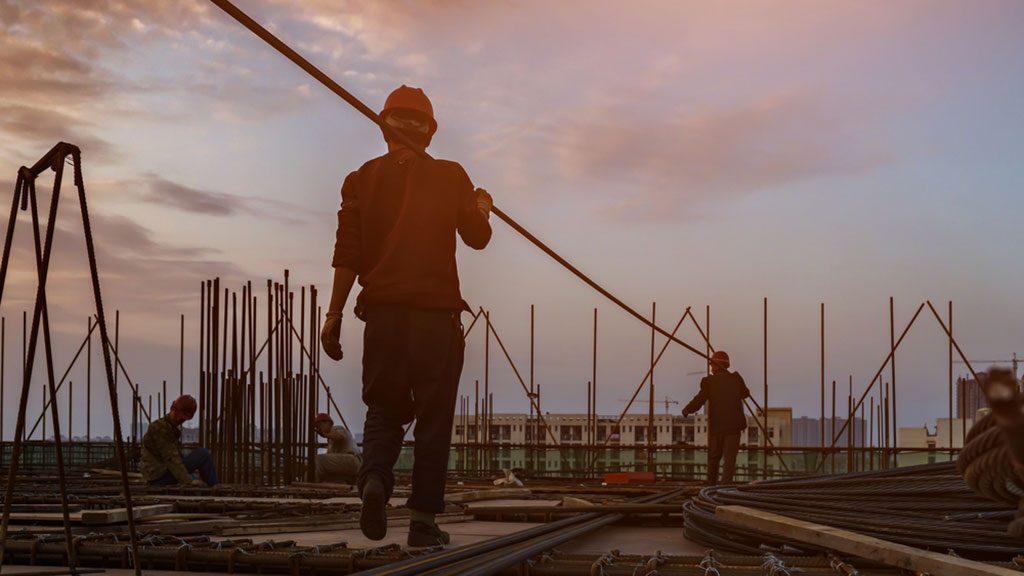Now is the time to plan, assess and prepare for the next pandemic and protect your organization against future events including supply chain interruptions.
That was the message from Chris Snider, head of risk services with Zurich Canada, during the Ontario Road Builders’ Association’s navigating supply chain risk webinar held recently.
“There isn’t any indication that there won’t be another pandemic. To approach recovery, to get back to what we would call normal…we want to make sure that we are learning from these events, understanding the different exposure concerns from organizations across the world and starting to plan,” said Snider. “Now is the time to say we know what is going on out there, we know where our concerns are, let’s move on to the next step. Let’s prepare ourselves for that eventuality of a particular type of supply chain event interruption.”
Snider and Jennifer Fortunato, AVP construction specialties and risk engineering with Zurich Resilience Solutions, provided a step-by-step approach to help guide companies through the process.
“The first thing is to identify that key supply line,” said Snider. “What service, what products make the most revenue and then work backwards to find out which are the critical supplies.”
In order to do that, companies need to develop a visual map of upstream and downstream suppliers with connections to company locations.
“You want to have a physical map, whether you draw it by hand or use a digital tool and understand where those key nodes are, such as border crossings, shipping and rail ports,” said Snider, adding it should also include anything “that can add an interruption to your supply chain, whether it be financial, political or anything that might cause that to stop.”
Companies should the gather key details of all suppliers and value chains, focusing in on one at a time, calculate revenue flow exposure and then run a variety of credible risk scenarios.
“We want to see what would happen now given all of our current conditions and programs that we have in place versus what would happen if we made some alternatives,” said Snider. “Then plot out a probability versus severity map and see which of those scenarios are going to be very important for us to begin to concentrate on.”
Bringing different departments in the organization into the conversation, assessment and analysis is also critical.
“Supply chain is not alone within an organization. It actually needs to encompass the organization,” said Fortunato. “Procurement needs to work with logistics, needs to work with the risk manager, with sales, with the CFO, with the CEO and it needs to be integrated in the organization, on everybody’s radar and within every discussion that you have.
“If our key supplier has gone down we’re relying on number two or number three,” she added. “The key is maybe two or three is getting their material from number one and then what do we do? We really need to know those things so we are prepared.”
The company then needs to focus on mitigation plans and alternatives to secure additional supplies or equipment if necessary and to do so before their competitors do.
In terms of risk, Fortunato said it’s important to have flexibility within your organization to react any way you need to depending on what happens.
“Collaborate within the industry. Know your challenges within your organization and with your suppliers. Diversify,” said Fortunato. “Know the level of risk that you are willing to accept and be flexible in your options if and when something does disrupt.”
Fortunato said roadbuilders in attendance should consider what the impact would be on road construction.
“It’s probably not going to be completed on time,” she noted. “We can’t get materials, we can’t get the equipment, we don’t have the people to do the work. What does that mean? It means a loss of revenue, bottom line. We are going to have delays. We may have quality issues because we’re trying to fast track something because we are behind. Then there is quality, reputation or maybe rework and even more money.”
Disruptions in the supply chain of competitors can also affect your company. That’s why it’s important to be a proactive organization, not reactive, Fortunato said.
“It’s being proactive and saying we want to be the most responsive, the most productive, we want to make the most revenue we possibly can on time on schedule for our customers and keep our reputation intact through thick or thin,” she said. “Why do I need to do that? So that they come to us for those jobs.”
Follow the author on Twitter @DCN_Angela.






Recent Comments
comments for this post are closed